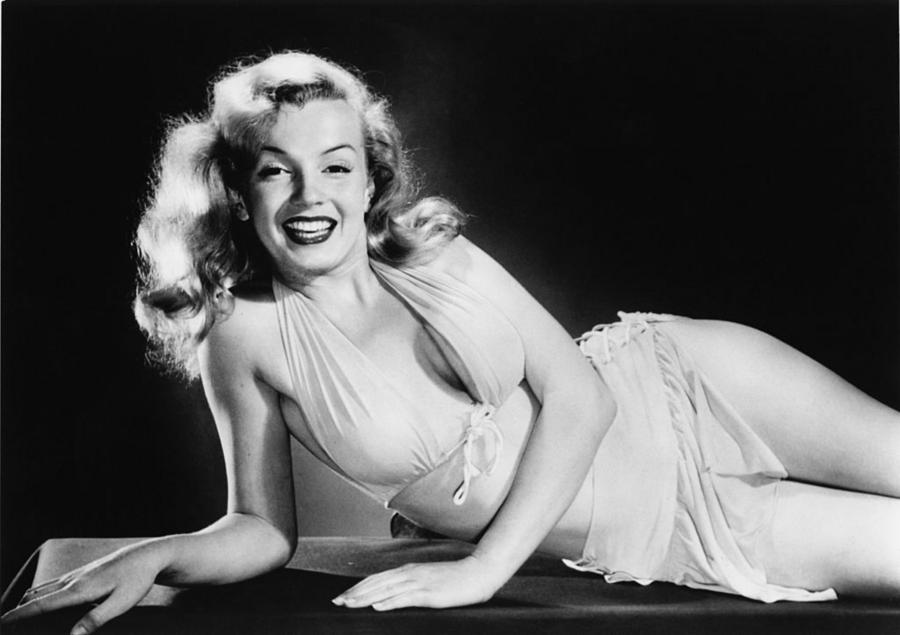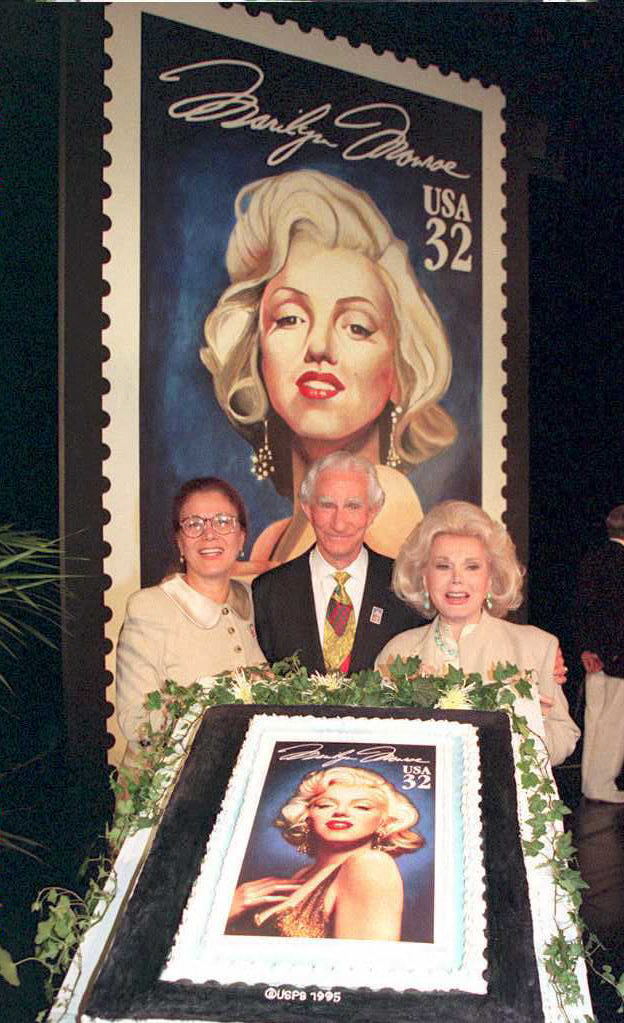During her brief but iconic career, Marilyn Monroe was paid around $4 million in total salaries for her various films. After adjusting for inflation, that's the same as around $42 million in today's dollars. Marilyn was not particularly responsible with money. Marilyn spent freely on homes, clothes, and jewelry, while also generously supporting family, friends, employees, and even strangers.
When she died in August 1962 at the age of 36, Marilyn left behind an estate valued at just $800,000, around $8.5 million today. After debts, taxes, and legal fees, that figure shrank to about $370,000.
Her will outlined a handful of small but meaningful bequests:
- $10,000 each to her half-sister and longtime assistant
- $5,000 in a trust for her assistant's child
- A $100,000 trust to care for her institutionalized mother
This is where it gets interesting. And this is how a little-known actress from Venezuela ended up owning the majority of Marilyn Monroe's image… and the tens of millions those rights generated in the decades that followed.

(L. J. Willinger/Keystone Features/Hulton Archive/Getty Images)
IP Rights
After her remaining cash was distributed, that left two remaining assets:
- Marilyn's physical property.
- Her intellectual property rights. AKA the rights to her image, name, and likeness (and all the money earned off those rights).
Marilyn bequeathed her physical property to her acting coach, Lee Strasberg. Lee and his first wife, Paula Strasberg, were basically surrogate parents to Marilyn.
Monroe's will gave 75% of her intellectual property rights to Lee Strasberg and 25% to her psychiatrist, Dr. Marianne Kris.
Dr. Kris died in 1980. Upon her death, that 25% stake was donated to the Anna Freud Centre for the Psychoanalytic Study and Treatment of Children in London. Anna Freud's father, Sigmund Freud, was a pioneer in research on sex. So it's somewhat appropriate that 25% of the money generated by one of the greatest sex symbols of all time benefits a foundation established by Dr. Freud's daughter.
Now let's talk about what happened to Lee and Paula Strasberg's 75% share.
Enter Anna Strasberg
In 1966, four years after Marilyn Monroe's death, Paula Strasberg, the wife of acting coach Lee Strasberg, died of cancer. Paula had been Monroe's on-set coach for her final films and was deeply embedded in her professional life.
The following year, Lee remarried. His new wife was Anna Mizrahi, a 28-year-old actress from Venezuela. Born in Caracas in 1939 to Sephardic Jewish parents, Anna had immigrated to the United States in 1960, worked for the United Nations, and studied acting with Sanford Meisner. She landed a few roles in film and television, including "Stay Tuned for Terror," "Run for Your Life," and "The Girl from U.N.C.L.E." She met Lee when auditioning for Actors Studio West, and the two married in 1968.
Lee Strasberg died in 1982. At that point, the 43-year-old Anna Strasberg suddenly became the owner of 75% of Marilyn Monroe.
I have no idea if Anna and Marilyn ever met. Let's say they did meet at some point. Maybe they briefly shook hands at a cocktail party in the late 1950s or early 1960s. Imagine telling the 30-something-year-old Marilyn that this 20-something-year-old aspiring actress would someday control her likeness and all the money generated from her estate. Earning literally ten times more money than Monroe earned during her career…
The Accidental Monroe Mogul
So after Lee Strasberg died in 1982, 43-year-old Anna Strasberg went to work.
She signed deals that put Monroe's name, signature, and likeness on hundreds of products, including clothing, cosmetics, vodka, slot machines, lingerie, and collectible dolls. Over time, Anna transformed Monroe into a posthumous marketing phenomenon. She earned tens of millions of dollars in the process.
Eventually, Anna partnered with the celebrity management company called CMG. A lawsuit would later reveal that the CMG deal reportedly guaranteed Anna a minimum of $1 million a year. However, as it turned out, Anna made more than $7.5 million in licensing revenue in just the four years between 1996 and 2000. In 2000, Anna created Marilyn Monroe, LLC to manage the estate's business operations.
Here's a photo from 1995 showing Anna (left), the US Postmaster General and actress Zsa Zsa Gabor, unveiling the Monroe commemorative stamp:

(Photo by VINCE BUCCI/AFP via Getty Images)
The War Over Marilyn's Image
Anna's ascent wasn't without controversy or legal challenges.
In 2005, four lawsuits erupted between Anna, CMG, and the heirs of several photographers who had captured iconic images of Monroe. The cases were filed in California, New York, and Indiana. At the heart of the dispute was a deceptively simple question: Was Marilyn Monroe a legal resident of California or New York when she died?
Anna insisted Monroe was a Californian, and as such, that enabled her to retain the right to license the celebrity images of Monroe, for which the four photographers owned the copyrights. If Marilyn was a New Yorker, the photographers would have been able to wipe out Anna's business of licensing Marilyn's image. In California, heirs retain the postmortem publicity rights to copyrighted photographs. In New York, the photographers retain the rights to their work and could therefore license them freely without approval or payment.
After seven years of legal battles and appeals, the Ninth Circuit Court of Appeals ruled in 2012 that Monroe was a New York resident. It was a major blow to Anna's licensing operation. The court decision meant the heirs of Monroe's photographers, not Anna Strasberg, would retain the rights to license many of the most iconic images of the actress.
Cashing Out at the Perfect Time
But Anna Strasberg had already seen the writing on the wall.
In January 2011, a year before the court ruling, she sold her stake in the Monroe estate to Authentic Brands Group (ABG) for $20 to $30 million. She retained a minority interest in the brand, ensuring ongoing income while stepping back from direct management.
The Anna Freud Centre, which had inherited the remaining 25% from Dr. Kris, reportedly received a windfall of about $8 million from the same sale.
Under ABG's leadership, Monroe's brand continued to thrive. ABG struck new licensing deals with beauty and fashion brands, and Monroe appeared posthumously in major advertising campaigns for Chanel, Dior, Snickers, Chrysler, and Coca-Cola. She also remained a top name on the highest-paid dead celebrities lists, with annual earnings reaching $10 million in 2023 alone.
A Legacy Beyond the Business
Though often portrayed as a shrewd businesswoman, Anna's stewardship of the Monroe estate wasn't purely commercial. She was deeply invested in Monroe's legacy, not only as a brand but as a person.
She curated three books based on Monroe's personal writings and memorabilia:
- "Fragments: Poems, Intimate Notes, Letters" (2010)
- "MM – Personal: From the Private Archive" (2011)
- "Girl Waiting: Drawings/Sketches" (2012, in French)
She also authorized the 2012 documentary "Love, Marilyn," which featured Monroe's writings voiced by contemporary actors and rare archival footage.
Anna continued to run The Lee Strasberg Theatre & Film Institute, which she co-founded and led as artistic director for decades. She taught acting, lectured around the world, and established scholarships including for students in public housing and the Oneida Nation in Wisconsin.
The Final Chapter
Anna Strasberg died in January 2024 at the age of 84 in New York City. Over the previous four decades, she earned at least $40 to $50 million off Marilyn Monroe's image. Literally ten times more than Monroe earned herself in her career.
In her later years, she spoke fondly of Marilyn Monroe, often describing her as curious, passionate, and eager to grow. She also reflected on the surreal experience of inheriting Monroe's belongings, boxes filled with letters, clothing, and even news clippings Monroe had saved about her future husband, Arthur Miller.
She once said, "The essence of Marilyn was her absolute enthusiasm. Her studies with Lee gave her confidence and made her stronger."
Anna Strasberg may have entered Marilyn Monroe's story by accident, but she shaped its second act with precision, ambition, and a surprisingly deep sense of stewardship.
/2016/11/GettyImages-623935704.jpg)
/2017/05/Marilyn-Monroe.jpg)
/2015/11/GettyImages-133568938.jpg)
/2020/08/anna-nicole-smith.jpg)
/2014/09/GettyImages-3379213.jpg)
/2020/12/Selena-Quintanilla-Perez2.png)
/2019/04/rr.jpg)
:strip_exif()/2015/09/GettyImages-476575299.jpg)
/2019/11/GettyImages-1094653148.jpg)
/2009/09/Jennifer-Aniston.jpg)
/2020/02/Angelina-Jolie.png)
/2020/01/lopez3.jpg)
/2019/10/denzel-washington-1.jpg)
/2020/06/taylor.png)
/2020/04/Megan-Fox.jpg)
/2017/02/GettyImages-528215436.jpg)
:strip_exif()/2009/09/P-Diddy.jpg)
/2009/09/Brad-Pitt.jpg)
/2009/09/Cristiano-Ronaldo.jpg)
/2009/11/George-Clooney.jpg)
/2018/03/GettyImages-821622848.jpg)